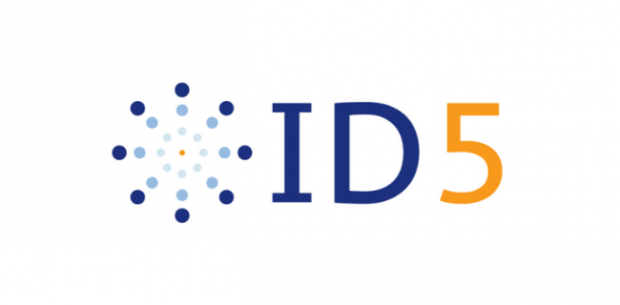The era of generative AI: Driving transformation in financial services
This week we are joining financial professionals at the Sibos 2023 conference on September 18 to 21, 2023 to discuss how we can tackle global challenges using the power of partnerships and technology. Today, I had a fireside chat with Dmitri Sedov, Global Group Head of Data Intelligence at the London Stock Exchange Group (LSEG). We shared how we are reshaping the future of global finance through our 10-year strategic partnership.
Financial markets are changing rapidly, creating new challenges and opportunities for all participants. For our customers, there is demand for the right data at the right time with reduced complexity and increased flexibility. LSEG’s comprehensive data and analytics and Microsoft’s trusted and secure global cloud platform and AI capabilities enable us to co-innovate solutions for the financial markets eco-system. These innovations will evolve how customers gain value from their data to unlock opportunities by combining LSEG’s data and content sources in Microsoft Fabric, integrated into the enterprise-wide data catalog and governance framework of Microsoft Purview.
Innovating to meet customer needs
Analytics and modeling are now critical to success as the increasing demand for diverse data fuels business decisions and drives the need for a simplified approach that meets business needs. In addition, as regulations become more quantitative, it has created substantial challenges in terms of lost time and capital for customers who don’t have the necessary data and analytics infrastructure in place.
Historically, Microsoft provided our horizontal cloud platforms to our customers such as solutions for developers—Microsoft Azure, Microsoft 365, and Microsoft Teams, notably among them—while LSEG separately delivered financial market infrastructure, data, and analytics. The burden largely fell on our mutual customers to map those building blocks to their business problems and to bring these assets together in a coherent way. That forced our customers to bear the cost and complexity of this integration.
With our partnership, we seek to help our customers climb the value chain by bringing these complementary assets together. We will transform financial services workflows to help finance and investment professionals improve decisions, communications, and productivity while maintaining regulatory compliance. Together we will offer customers a simpler and more connected solution with:
- Cloud-based data architecture that consolidates LSEG datasets on one, flexible infrastructure that is simple, responsive, and efficient, and built to meet the data needs of the enterprise.
- Cloud analytics and modeling services built on Microsoft Azure Machine Learning.
- A comprehensive security approach enabling preventative and detective controls to meet the security, privacy, and compliance needs of this regulated industry.
Customers will be able to use the combination of Microsoft Fabric powered by LSEG data, analytics, and data management capabilities to enhance their workflow and bring greater efficiency and productivity to their organizations. To bring that to life, you can see in this workflow illustration how LSEG and Microsoft’s collaboration will drive significant productivity by simplifying the whole process of finding, managing, and distributing massive content sets.
Speaking about enhancing productivity, we also discussed how the LSEG-Microsoft partnership will evolve the customer experience at-scale across global financial markets to deliver the most advanced, easily accessible financial data and insights through:
- A single point of access to financial markets data that reduces time and cost for financial institutions to discover, integrate, manage, share, and derive insights from petabytes of financial and alternative data.
- Intelligent analytics solutions that reduce the time and cost for creating, distributing, and running complex analytic models across APIs and through the Microsoft productivity suite.
- An integrated financial services workspace that empowers customers to make informed decisions with confidence and greater speed through seamless workflows and increased productivity.
The uniqueness of this partnership is in LSEG’s data and analytics, coupled with the Microsoft cloud platform, data platform, and Microsoft 365 collaboration suite. In this way, we meet customers where they are, while creating vertical industry value. Unifying data with Microsoft Cloud for Financial Services can make data and analytics much easier to discover and use—whether that is finding pricing analytics in Excel, connecting with counterparties through Microsoft Teams, or using Microsoft 365 Copilot in Microsoft productivity apps to access LSEG financial markets data. Together, we will benefit customers by increasing productivity while offering greater efficiency, resilience, and scalability across all workflows.
Moving ahead with generative AI
The benefits of AI and machine learning have accelerated the rate of change in financial innovation enabling frictionless customer experiences, empowering employees to apply their creativity and talent rather than focusing on tedious work while enabling deeper insights to drive better decisions.
AI enables technology to understand and speak the language of industry. Generative AI will enable organizations to better take advantage of technology, collapsing data barriers and decoding the complex landscape of macroeconomics, markets, and regulations.
“Microsoft AI improves the way we work, and we are making AI tools a better fit for financial services. We are combining Microsoft’s dependable and scalable infrastructure with the breadth and depth of LSEG’s trusted high-quality data and IP safeguards. Together we are shaping a future where technology supercharges our customers’ workflows and insights reliably, effectively, and responsibly.“
—Dmitri Sedov, Global Group Head, LSEG Data Intelligence.
Microsoft AI tools are making work easier, and LSEG is making AI more valuable to financial services. AI is only as good as the quality of the data it consumes. LSEG brings a unique capability to demonstrate data trust with a breadth and depth of aggregated, cleaned, and codified financial markets data as well as extensive data management knowledge and understanding of what regulators and the world’s largest financial institutions need. These capabilities sit alongside Microsoft’s Responsible AI commitments, including our recently announced Copilot Copyright Commitment to protect our customers from copyright claims arising from their use of our copilots.
The benefit of AI for customers and clients will be in how quickly and easily they can access the right data to generate insights with AI that are both reliable and relevant to the task at hand.
Microsoft Fabric and the embedded generative AI capabilities in Fabric present another great transformation for financial services. Microsoft Fabric will be the cornerstone of LSEG’s Data Platform, and their financial markets intelligence will help enable the financial markets ecosystem to leverage generative AI and other capabilities. We will also use AI to address the data discoverability challenge itself by using AI models to better understand user preferences, predictively surfacing relevant data, and categorizing vast datasets into intuitive segments. All of LSEG’s data available through Microsoft Fabric will also be published in Microsoft Purview, enabling this data to be discovered in the enterprise data catalog and governed centrally alongside other proprietary and commercially acquired data sets.
LSEG’s quantitative and engineering talent and proven ability to provide the right data for the financial services community bring the credible expertise needed to ensure generative AI provides the optimal yet secure experience for our customers. There is a profound opportunity for our customers to unlock new value and we are excited to deliver this value together with LSEG.
Discover more
Microsoft Cloud for Financial Services
Accelerate innovation for sustainable growth.





 Calling the shots
Calling the shots


